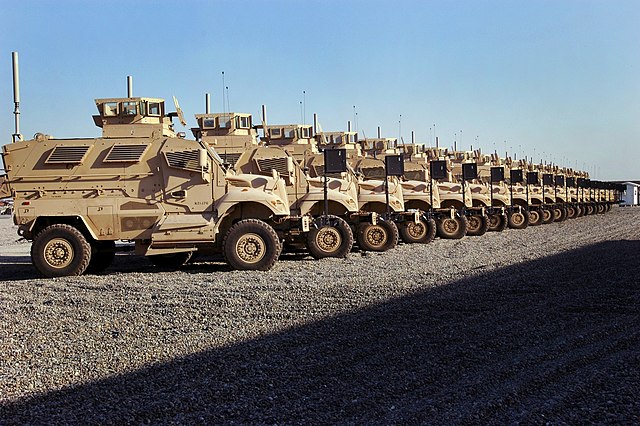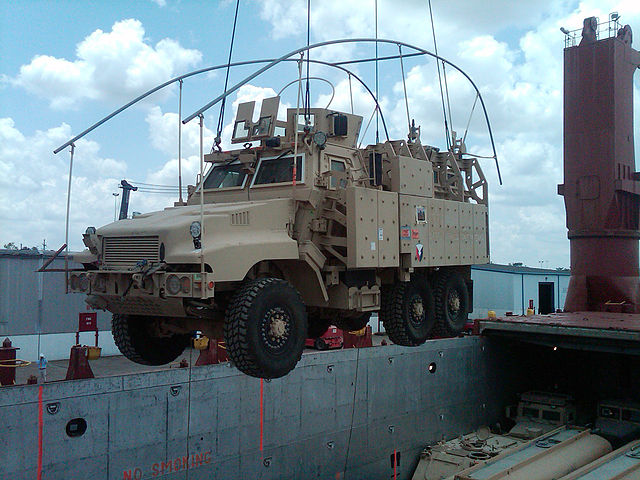Mine-Resistant Ambush Protected is a term for United States military light tactical vehicles produced as part of the MRAP program that are designed specifically to withstand improvised explosive device (IED) attacks and ambushes. The United States Department of Defense MRAP program began in 2007 as a response to the increased threat of IEDs during the Iraq War. From 2007 until 2012, the MRAP program deployed more than 12,000 vehicles in the Iraq War and War in Afghanistan.
A Cougar HE MRAP being tested in January 2007 with landmines
First MaxxPros fielded in Iraq
The last vehicle from Iraq returned to U.S. This vehicle arrived at the Port of Beaumont, Texas, on 6 May 2012, and was unloaded from the ship on 7 May 2012.
A RG-33 convoy with the Common Remotely Operated Weapon Station (CROWS) system installed.
The Oshkosh M-ATV is a mine-resistant ambush protected (MRAP) vehicle developed by the Oshkosh Corporation for the MRAP All Terrain Vehicle (M-ATV) program. Intended to replace M1114 HMMWVs (Humvee), it is designed to provide the same levels of protection as the larger and heavier previous MRAPs, but with improved mobility.
An Oshkosh M-ATV in July 2011
M-ATV at the Fort Irwin National Training Center in November 2011
A Marine sniper with U.S. Marine Corps Forces, Special Operations Command, provides security from the back of an M-ATV during a medical engagement as part of a pre-deployment exercise
M-ATV components being refurbished, 2017








